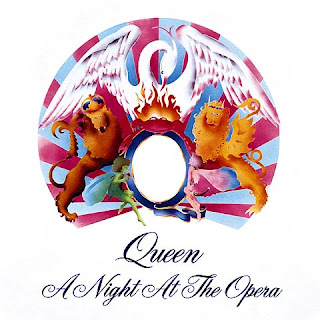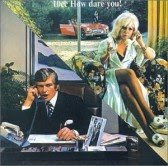 JadedWSJ: The Monetary Authority of Singapore is investigating why Jade Technologies Ltd., a takeover target, delayed disclosing that Merrill Lynch & Co. had seized a large block of its shares, causing investors to lose millions of dollars.
JadedWSJ: The Monetary Authority of Singapore is investigating why Jade Technologies Ltd., a takeover target, delayed disclosing that Merrill Lynch & Co. had seized a large block of its shares, causing investors to lose millions of dollars. The circumstances of the takeover offer for Jade were already under investigation by Singapore's white-collar crime unit and the council that oversees mergers and acquisitions.
Jade is listed on Catalist, Singapore's secondary board. The takeover offer, if it had gone through, would have valued the company at S$218 million (US$160.8 million). Now the aborted offer, by Jade President Anthony Soh, is threatening to undermine investor confidence in the Singapore market, among the most developed in Asia. The controversy has become a test case for regulators, with institutional and individual investors complaining that the system has wronged them.
OCBC, Mr. Soh's adviser, had vouched for his ability to fund the deal. OCBC subsequently withdrew from its role and filed a complaint against Mr. Soh with the Commercial Affairs Department, which fights white-collar crimes, for allegedly misleading the bank.
The saga began in February, when Mr. Soh said he wanted to take over the company, which has interests in microchip engineering and mining. The sole requirement of the offer of 22.5 Singapore cents a share was an acceptance level of 50%, meaning Mr. Soh needed to secure just a small addition to his own 46% stake to succeed. On April 5, he withdrew the offer after getting permission from the local regulator. He said he no longer had enough funds to continue with the bid. The stock went into a freefall when the market opened on April 7, sinking to seven Singapore cents from 22 Singapore cents before trading was halted on April 1. The shares have remained near seven Singapore cents over the past two weeks.
What many investors didn't know was that Mr. Soh had pledged a 30.5% stake in Jade, or 295 million shares, as collateral for a loan from Australian broker Opes Prime Group Ltd. to fund the takeover. Opes collapsed and went into receivership in the last week of March.
On April 1, before shareholders got details about the deal's financing, Opes creditor Merrill liquidated 95 million of the shares Mr. Soh had pledged. Merrill had received 256 million Jade shares from Opes on March 27. While Merrill sold out at 22 Singapore cents a share, other investors held or even accumulated new positions under the assumption the takeover would proceed.
Angry investors, who watched helplessly as Jade lost S$145 million in market capitalization in the first minute of trade on April 7, want to know why they weren't told Merrill had seized Mr. Soh's shares. "If public notice had been made, there's absolutely no way we would have bought any stock at all," said an investor who increased his stake in Jade to almost 5% on April 1. "Until recently we had an extremely high degree of confidence in the integrity of the Singapore system in relation to takeovers. Things just didn't go wrong," he said.
An MAS representative declined to elaborate on its investigation.
Merrill spokesman Rob Stewart, based in Hong Kong, said the bank "made the required shareholder notification as required by the regulations." Merrill was required to notify both Jade and the Singapore Exchange of its holding in Jade by March 31, two business days after it took possession of the shares.
The Singapore Exchange doesn't announce changes in shareholdings until it is notified by a company. It declined to comment on the Jade issue. Jade Chief Financial Officer Vera Lim said Jade received some information from Merrill in the days leading up to April 8, before it announced the change in Merrill's holding, but declined to elaborate. "On April 8, we received all the information from Merrill Lynch," Ms. Lim said.
OCBC, which had vouched for Mr. Soh's ability to fund the deal, said it had begun to doubt "the integrity of the representations" given by Mr. Soh. Singapore law prohibits withdrawal of a takeover offer without approval from the Securities Industry Council, which has oversight for mergers and acquisitions. The SIC declined to explain why it allowed Mr. Soh to drop the offer or if OCBC was bound to back it. The SIC "has commenced investigation into the circumstances that led to the withdrawal of the offer," an SIC representative said. "However, it is premature and inappropriate to give further details at this point."
A second investor said he bought shares expecting OCBC to stand by the deal. "I placed confidence in the fact that OCBC was involved in the process, and it stated clearly that financing was in place," he said.
OCBC declined to comment when asked if it was under obligation to back the financing.
Comments: The Bursa and SC should take note on the Jade saga because it could very well happen anywhere. There are numerous companies offering "margin facilities" out of Singapore and Malaysia. As these companies are not under the jurisdiction of the companies where it is listed, when things go wrong, the domino effect is at the expense of minority shareholders and investors who relied on available information.
To prevent such incidents, there should be new disclosure rules when the controlling shareholder or even substantial shareholders pledges their shares to a third party.
OCBC should be quizzed further on whether their grounds for withdrawing their funding was legal and in the best interest of the market's integrity. Merrill Lynch, which seized the shares from Opes is in the clear and they absolutely have the right to sell the shares, and they played by the rules in terms of informing the exchange and company. Maybe new rules should be put in place in the "delay allowed" when reporting sales by significant shareholders - one week may be too long. All exchanges and regulators, please take note.
SIC should be in a lot of hot water for allowing Soh to drop his offer - heads will roll. It seems that the only people not being considered or catered for in this saga were the minority shareholders and investors - they were basically hung out to dry, left to make decisions based on available information which were "outdated", materially different from reality, and left holding the bag. Tsk tsk!
p/s: photo: Fiona Xie














































What do you suggest? Cut liquidity to curtail demands? Speed of production of commodities cannot match rate of increase in demands. You cannot ask emerging countries to go back to old days, right?
The biggest problem, which many are still not aware, is that unlike the subprime crisis and the credit implosion, a food crisis cannot be solved or minimised by pumping liquidity or having more bailouts. You cannot just plant more rice or coffee overnight. Hence the headline: its a train wreck waiting to happen. It will happen. There is nothing much we can do to stop it. How's that for being optimistic?
question is, what's the best way to position our portfolio during inflation environment? invest in gold, palm oil, stocks related to food production, O&G etc?
Gold.
What's your thoughts on the effects of inflation on property prices? Are they sure to increase in value? What's the effect of restrictive monetary policy on the property values? Do rentals go up during inflation? The effects on equities are quite predictable. But real estate?
Inflation = Higher interest rates = Lower affordability. Hence spiraling food inflation does not necessarily equate to corresponding property price jumps. Even in those supposedly good sectors with positive black swans (food manufacturers, plantations), their earnings jump will be regarded as an anomaly and would not get a long term hike in PER valuation. What can the governments do? Put more funds into subsidy. This is a case of people getting richer but clamouring for reduced supply. Prices get bidded higher. Unlike oil which affects companies a lot more, food prices affects a much larger crowd. We all will have to live with much higher food prices, not to mention fuel prices. Governments will have to pay higher salaries for civil servants. Countries like Malaysia will be net beneficiaries as we have oil royalties and plantations to help cushion the blows. It will hit resource poor nations a lot harder. Developing economies with high poverty levels will be hit especially hard. Even the aid in USD have depleted in value and can only buy a lot less of things costing a lot more.
A looming food crisis = spiraling inflation = restrictive market policies = higher interest rates to curb spending = not so good for equities.
A looming food crisis = Mounting government subsidy = Controlled prices break loose = Social unrest & riots = not good for equities.